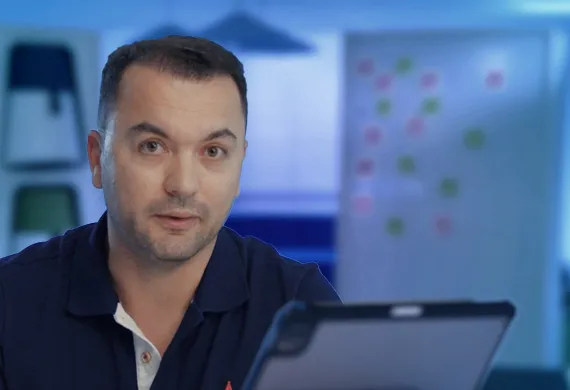Circular Supply Chains: Reshape the Enterprise’s Value Network
Transform how you do business through circular supply chains to achieve profitability and lasting success.
Today, companies find themselves at a crossroads. The linear take-make-waste model, once the cornerstone of industrial success, now stands as a detriment to our planet. Why? Because the world is running out natural resources while up to 90% of materials are wasted or unavailable for reuse and recycling, according to the Circle Economy’s 2023 Circularity Gap report. Not only that. A lot of pollution is generated during raw material extraction and disposal. Change is imperative.
When combined with the experience economy, the circular economy offers a new way of doing business that is more sustainable — allowing you to create more engaging experiences and satisfy your customers on a deep, emotional level. Move from linear to circular supply chains where you can reconcile environmental protection with business operations and demonstrate that value creation is achievable within strong planetary boundaries.
Model and Optimize the Value Network
But first, what is a circular supply chain?
A circular supply chain calls for a transformation of business models, processes and technologies, whereas a linear supply chain is resource-intensive and unsustainable in the long term.
Moving to a circular value network
Moving from a linear supply chain to a circular value network is the crux of a successful transition to the circular economy. The circular value network is a closed-loop system where products and materials are continuously reused, recycled and regenerated. To make this shift successfully, you must transform the value network to incorporate circular practices such as reverse logistics of products and materials or improving transparency and traceability across the value chain. This is where the virtual twin can add value.
By modeling the entire value network through the virtual twin, you can:
- Gain end-to-end visibility and identify value leakage
- Make more data-driven decisions based on actionable knowledge gathered from consumers and stakeholders
- Improve supplier management, production processes and customer engagement
- Consolidate and measure your products' environmental impact
- Balance circularity and product innovation while growing profits
Interested to get to know our experts featured in the videos? Meet them here
Turn Aspirations Into Concrete Action
The circular economy isn't merely an aspiration; it's a necessity for our planet's survival. However, making it scalable, achievable and profitable requires a profound shift in business operations.
The time to take action and drive practical change is now.
Through modeling, data-driven insights and the power of the virtual twin, you can chart a course toward circularity, profitability and lasting success. Commit to actionable steps with the right circularity strategy that incorporates sustainable supply chain management. Re-engineer the way you do business today while simultaneously reshaping your business model for the future.
More Questions on Circular Value Networks?
Most companies are focusing on sustainability: the circular economy is accelerating a trend already in place. These actors are reinventing the way they think of operations from design to execution. By looping the supply chain and circular economy, companies can cut the rising cost of raw materials and cope with volatile availability.
Looping the supply chain also creates less waste while helping companies reduce their environmental impact. So, we may see more linear supply chains evolving into circular ones, and we may see this in different initiatives.
For instance, manufacturers refurbishing their discarded or old products may extend the life duration of equipment or even assets. Look at trucks, metals and equipment, pieces of automation, and buildings — we are seeing a lot of actors re-engineering old buildings and changing the layouts to ensure the usability of the buildings and the assets, as well as transforming their current assets into more frugal warehouses.
And we should not forget that the greenest buildings are potentially already created. But if we need to create new ones, we must use more sustainable raw materials or products. For instance, the new cement generation for slabs generates 20% less carbon emissions than the previous generation. They also use recycled products.
Think about transforming operations on planning sites to increase the usability of resources and equipment. Also, consider how technology can help and support this circular economy improvement. For instance, setting up sensors in tires will help reduce fuel consumption and extend the lifespan.
Before answering the ‘how’, let me answer the 'why'. So why do companies need to move to circularity?
The first reason is to comply with regulations, mainly to reduce fines and disposal costs. The second reason is to reduce material costs driven by increasing goods scarcity and product costs. The third reason is to improve the brand image since customers are increasingly attentive to environmental matters — this is key to growing revenue and increasing market share.
Now, let's move to the ‘how’. To embrace circularity, companies need to adopt an end-to-end approach. The scope of product assessment must be extended from solely manufacturing to a cradle-to-cradle point of view. It’s essential to design products to maximize the recyclability and material recovery rate at the end of the product lifecycle.
Modularization and modernization techniques help in reducing end-of-life waste. So, costs should be kept as low as possible while keeping other equipment efficiency as high as possible throughout the product lifecycle. System of systems help understand the iterations within different systems and the trade-offs in sustainability and operational matters.
Everything is driven by regulators to push OEMs into embracing circularity directives like ROHS, and WEE waste from electrical and electronic equipment. Digital passport regulations are pushing OEMs to reduce hazardous material usage and track them all along the product lifecycle.
Dassault Systèmes is assisting in transforming an operational business model to a product-as-a-service business model, mainly to reduce CAPEX. This change has a major impact on product development since OEMs own the asset during the whole ownership phase. Hence, OEMs need to reduce service costs by working on spare part costs, maintenance costs, downtime and asset efficiency.
You can see that the trend for OEMs was to sell the machine at the lowest price possible while selling the services during operations at a high price. Now, OEMs have to work differently, which is a complicated and different approach.
Manufacturers can improve reverse logistics by engaging suppliers early and embedding sustainability goals into development cycles. This ensures that sustainability objectives are well understood and integrated into product design from the outset. Setting clear KPIs in supplier contracts establishes clear expectations and accountability. Additionally, companies should collaborate with suppliers on innovative initiatives to enhance circularity and improve sustainability efforts. These KPIs and metrics should be explicitly outlined in contracts, allowing for both incentives and legal obligations to ensure compliance. Regular performance reviews are essential to track progress, identify areas for improvement, and reward suppliers who align with sustainability goals.
Other Circular Economy Pillars
Explore key pillars that are disrupting the conventional linear economy, eliminating value leakage and paving the way for a scalable, profitable and achievable circular economy transformation.
Prioritize Sustainable Materials
The choice of materials can significantly impact your product’s environmental footprint. Incorporate circularity into product development through durable, recyclable and biodegradable materials by design.
Rethink Product Design
The entire product lifecycle matters. Optimize product design for each lifecycle phase to reduce the environmental impact of your products and increase their circularity.
Circular Solutions for Your Business Challenges
Take Definitive Steps Toward Circularity Success
Inspired by actionable strategies from Dassault Systèmes’ industry experts? Dive into our Circularity Insights Digest, your definitive guide to transform circularity goals into scalable, achievable and profitable outcomes
Circularity in Action
At the core of the concept of circular economy lies the idea of circularity, where resources are kept in use for as long as possible. Real-world adoption of circular economy strategies demonstrates the tangible benefits of this approach. Embracing Dassault Systèmes’ 3DEXPERIENCE® platform allows organizations to reimagine their operations, aligning them with the principles of the circular economy. From design phase to lifecycle analysis, businesses can create products that contribute positively to the green economy while meeting consumer demand for sustainable solutions.





